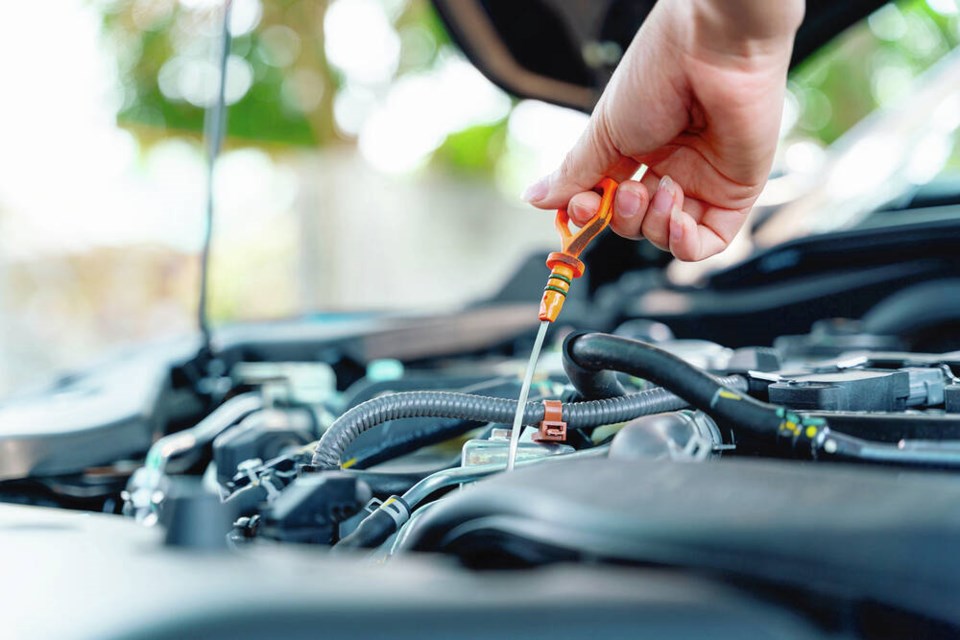Somewhere on the inside of your car window there is a little sticker. You didn’t put it there. You are used to ignoring it in the same way you are used to ignoring dust on the ceiling fan, iPhone terms and conditions, and unregulated capitalism.
But that little sticker has an important job. Namely, to remind you to have your vehicle’s oil changed 12 to 18 months ago.
Just so we’re all on the same page here, an oil change is the process of draining a car’s old motor oil and replacing it with fresh money.
You may be wondering, Dave, why is it so important to regularly change my vehicle’s oil? It’s not like we’re talking about underpants here. Well, according to Carfax, a report service that provides information on used vehicles in Canada, there are many benefits to changing the oil in your car:
• Cleaner emissions
• Improved gas mileage
• Extended engine life
Each and every one of the previous, unexplained points leads to better overall performance for mysterious, unsupported reasons. So, there you have it.
I believe the actual, technical explanation for why we need motor oil is because engines are complex machines filled with moving metal parts that are likely to explode and kill us at any time. The job of the oil is to reduce the friction and heat in a car engine by instead raising the temperature of the Earth.
How often you should change your vehicle’s oil depends on how frequently you drive, and whether you drive on Victoria’s roads at the current 10 km/hour speed limit, or somewhere sensible. The car’s owner’s manual will provide guidelines for oil changes and a suggested schedule. Hahaha, I’m just kidding! Nobody reads the manual; it should be carefully stored in the glove box for ballast.
If you use your car regularly, it is recommended that you change the oil after 12,000 kilometres of driving, or when you happen to have half an hour to kill and find yourself already parked on a vehicle lift in an oil-change garage, whichever comes first.
Of course, if you drive in more severe conditions, such as the Sahara Desert, or employed as a getaway driver, you should consider getting an oil change more often, say, every few kilometres to be on the safe side.
Speaking of sides, an important aside I want to make is that in Canada we use the metric system even though we still talk about “mileage.” In metric, the word kilometre is correctly pronounced “KILL-o-meter,” not “kih-LOM-eter” – in the same way the metric word centimetre is correctly pronounced “CENT-i-meter” not “cen-TIM-eter.” You’re probably saying it wrong, but it’s okay, I still like you.
Surprisingly, it is possible to change the oil in your car’s engine by yourself. But I should warn you that the process is complicated, involving quite a bit of bending over, lying on the cold concrete of the driveway, and swearing your head off. My question is, why bother in the modern age? We also have flush toilets and vaccines, even if some people refuse to use them.
My advice is to drive down to one of the oil-change garages cheerfully named to connote jolly, speedy oil-changing services, rather than cancer and climate change. They are staffed by very grubby technicians, each wearing the grim look of men living with regret.
Still, their work is to be celebrated: in British Columbia, some 50 million litres of used motor oil is recycled each year.
When you arrive for an oil change, you will have to decide if you want regular motor oil or synthetic. Regular oil is made from refined crude oil, the black gunk pumped out of the ground that used to be dinosaurs, and now causes cancer. Synthetic oil is an artificially created chemical compound combining conventional oil with additives to provide better temperature performance, and cause cancer.
It’s important to know that synthetic oil costs two to three times more than regular motor oil. Nevertheless, I always pick the synthetic stuff because it’s what my dad uses, and I want to avoid any more conversations with him about how synthetic oil has a longer shelf life and produces less air pollution, which may be true or may be just another unexplained reason from Big Oil Change.
A final thing you will have to pay attention to is the motor oil designation. Motor oils use a rating system to classify oil by viscosity, which is a fluid’s resistance to flow. Thin fluids like water have a low viscosity, and thick fluids like Canada Post employees have a high viscosity.
For an SAE 0W-20 oil, the “0” is the cold-temperature viscosity rating, the “W” stands for “winter,” and the “20” is the high temperature viscosity rating. This is important because for unexplained reasons, SAE 5W-30 and SAE 0W-30 flow better at colder temperatures than SAE 10W-30.
When the oil change technician asks which kind you want to put in your car’s engine, play it safe and just say “kih-LOM-eter.”




